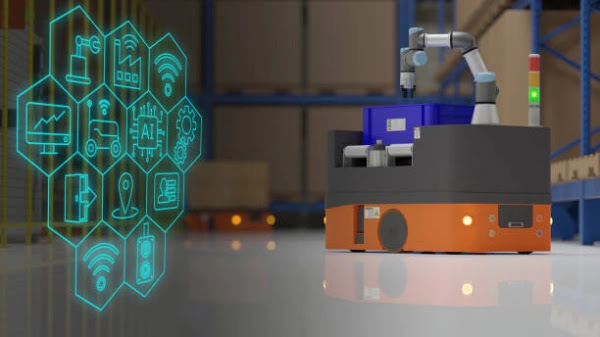Featured
- Get link
- X
- Other Apps
Remote Employee Monitoring Software: Enhancing Productivity, Security, and Collaboration in the Virtual Workplace
Introduction
As technology continues to advance and the concept of remote
work gains popularity, organizations are embracing the benefits of having a
distributed workforce. Remote employees offer greater flexibility, reduced
overhead costs, and access to a diverse talent pool. However, managing a
virtual workforce comes with its own set of challenges. One significant concern
for employers is ensuring employee productivity, data security, and efficient
collaboration. To address these challenges, remote employee monitoring software
has emerged as a powerful tool.
What is Remote Employee Monitoring Software?
Remote employee monitoring software is a set of digital
tools designed to track and analyze the activities of employees working from
locations outside the traditional office. This software provides employers with
valuable insights into how their remote team members spend their work hours,
what tasks they are working on, and how they collaborate with colleagues. It
encompasses a range of features such as time tracking, productivity monitoring,
internet usage tracking, application monitoring, and keystroke logging.
Key Features and Benefits
Time Tracking: Remote employee monitoring software allows
employers to monitor the amount of time employees spend on specific tasks or
projects. This data can be used to analyze productivity, manage workloads, and
improve time management.
Productivity Monitoring: Employers can track the
applications and websites employees access during work hours. This data enables
them to identify unproductive activities and address potential time-wasting
behaviors.
Collaboration Analysis: By monitoring communication and
collaboration tools like emails, chat platforms, and video conferencing,
employers can assess how well teams work together and identify areas for
improvement.
Goal Setting and Performance Evaluation: Remote monitoring
software can help set performance goals, track progress, and evaluate employee
performance objectively, leading to a fairer and more transparent evaluation
process.
Data Security: Many monitoring tools include features that
prevent data breaches, monitor data access, and identify suspicious activities
to safeguard sensitive information.
Remote Support and Troubleshooting: Some software solutions
offer remote access capabilities, allowing IT teams to provide support and
troubleshoot issues on remote devices.
Compliance and Legal Protection: In industries with strict
regulations, monitoring software can help ensure compliance with data
protection laws and provide evidence in case of legal disputes.
Controversies and Ethical Concerns
While remote employee monitoring software offers various benefits,
it has also raised ethical concerns and controversies:
Employee Privacy: One of the primary concerns is the
invasion of employee privacy. Monitoring software that tracks keystrokes,
internet browsing habits, or captures screenshots may be perceived as intrusive
by employees.
Work-Life Balance: Constant monitoring can blur the
boundaries between work and personal life, potentially leading to burnout and
reduced job satisfaction.
Trust and Employee Morale: Excessive monitoring can lead to
a lack of trust between employers and employees, negatively impacting morale
and job satisfaction.
Accuracy and Context: Monitoring tools may not always
provide a complete picture of an employee's productivity or work quality. They
may not consider external factors that affect performance.
Best Practices for Implementing Remote Employee Monitoring Software
To address ethical concerns and maintain a positive work
environment while reaping the benefits of remote employee monitoring software,
organizations should consider the following best practices:
Transparency and Consent: Employers should be transparent about
their intention to implement monitoring software and seek employees' consent
before doing so.
Focused Monitoring: Focus on monitoring work-related
activities rather than personal behavior to strike a balance between oversight
and privacy.
Clear Policies: Establish clear policies regarding remote
work expectations, acceptable internet usage, and the use of monitoring
software.
Use Data Ethically: Ensure that the data collected is used
solely for work-related purposes and is stored securely.
Regular Reviews: Regularly review the effectiveness and
impact of the monitoring software to make improvements and address concerns.
What is remote work monitoring?
Remote work monitoring refers to the process of tracking,
observing, and analyzing the activities, performance, and behavior of employees
who work from remote locations, outside the traditional office environment. It
involves the use of various digital tools and software to collect data on how
remote employees utilize their work hours, interact with colleagues, access
company resources, and handle assigned tasks and projects.
Key Aspects of Remote Work Monitoring:
Time Tracking: Remote work monitoring often includes time
tracking features that record the hours worked by remote employees. This data
helps employers ensure that employees are adhering to their designated work
schedules and can also aid in calculating wages, managing workloads, and
tracking productivity.
Productivity Monitoring: Employers may use productivity
monitoring tools to track the activities and applications used by remote
employees during work hours. This data allows managers to assess how effectively
employees are using their time and identify potential areas for improvement.
Conclusion
Remote employee monitoring software can be a valuable tool
for organizations to enhance productivity, improve data security, and
facilitate collaboration in a virtual workplace. However, it is essential to
implement such software responsibly, with a focus on employee privacy and
ethical considerations. By striking the right balance, organizations can create
a positive remote work environment that benefits both the employees and the
company as a whole.
- Get link
- X
- Other Apps


